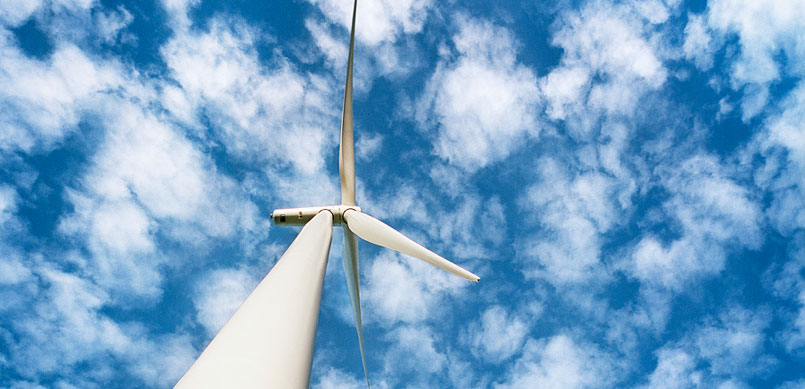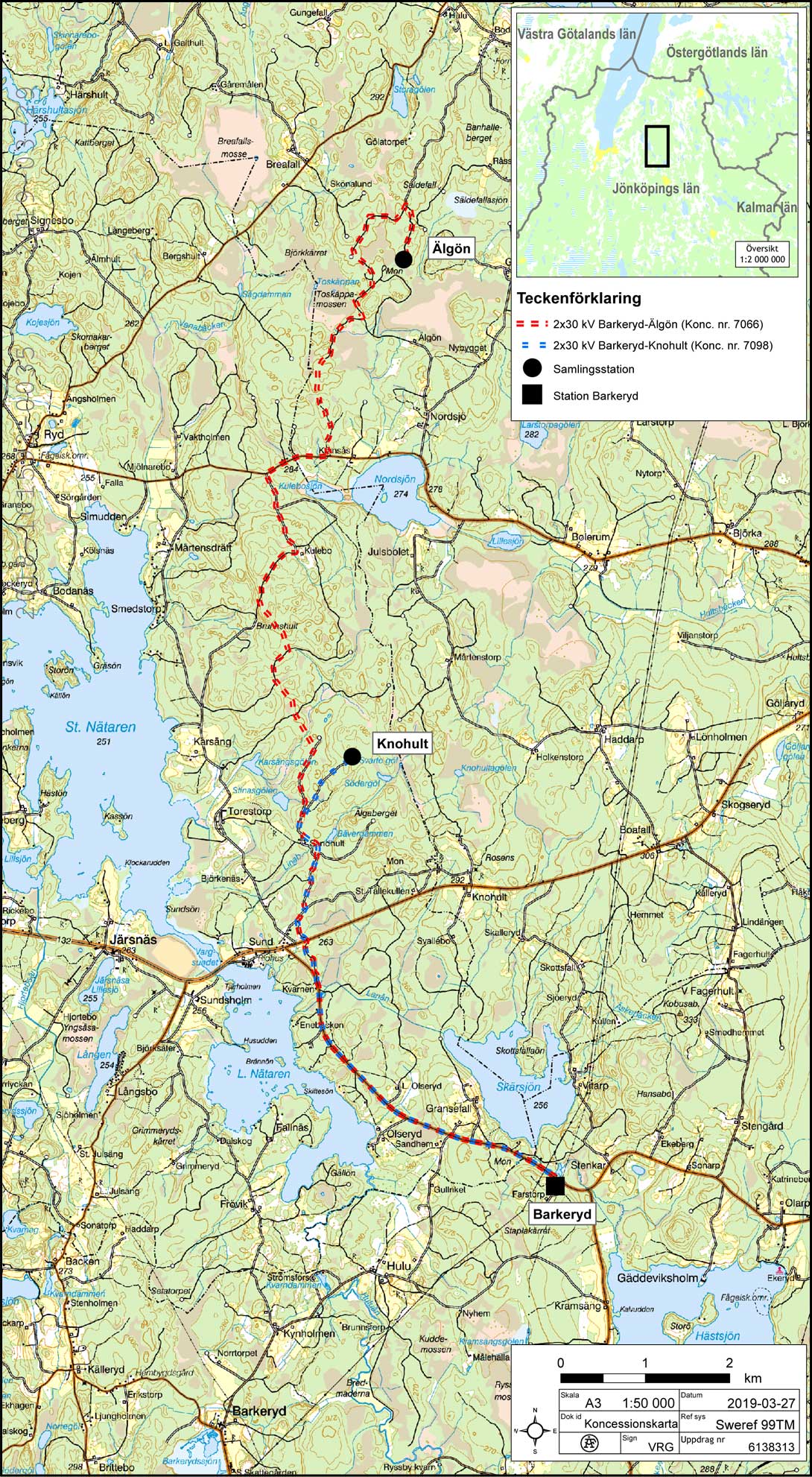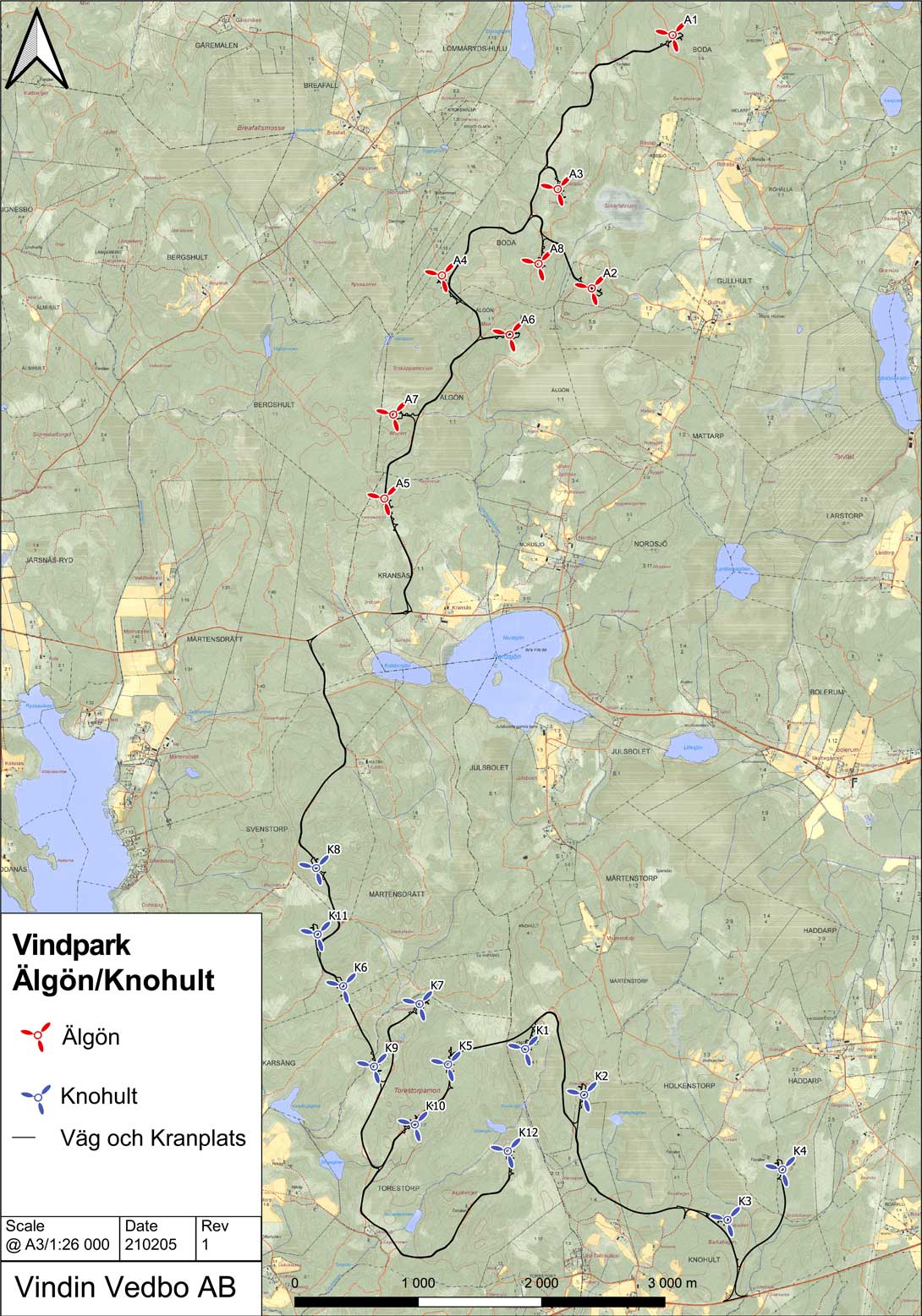
In order to best achieve Sweden’s energy goal that it will have 100% renewable electricity production by the year 2040, the areas designated for wind power must be used efficiently. Thanks to technological development, the Vindin Vedbo project can contribute to increased renewable energy production to a significantly greater extent than originally anticipated when the permits were issued, and most importantly without any increased environmental impact.
The development of Vindin Vedbo at Knohult and Älgön wind parks began in 2010, obtaining environmental permits for both sites in 2016 after extensive investigations and statutory permit processes, with requirements for adaptations during construction, commissioning, operation and dismantling to minimize Vindin Vedbo’s impact on the environment and surroundings.
The design of the wind farms
The position of the turbines
The wind turbine positions have been optimized for maximum production with regards to natural and cultural values, visibility and noise. The Knohult and Älgön wind farms have a total installed capacity of 86MW (20 x 4.3 MW) which will produce CO2-free electricity in an amount sufficient for an average consumption of 44,000 households.
Grounded electrical cables
Transfer of the electricity produced will take place in ground cables along roads both within the park and via Eon's regional network to the Barkeryd power station.

Roads and transport
Roads to and within both wind parks at Knohult and Älgön have been adapted around the natural and cultural values and have the least impact on landowners and nearby residents. Contractors are only permitted to use the designated entrances and exits to and from road 132 and road 975.

Noise, Shadow flickering and hinder lights
Noise and shadows
The development of modern wind power technology has resulted in quieter turbines with less noise at the source. As part of the project permitting process and the final permit, modelling has been carried out and noise levels are assessed under different conditions from a variety of locations around the wind farms to ensure that the noise level is within the limitations set out in the permit.
Similarly, shadow flickering has also been modelled and studied in potentially affected locations to ensure that shadow formation is within the limitations of regulations. As an additional measure, the turbines are equipped with systems that will stop the rotation of the turbines during shadow-sensitive periods.
With the help of operating settings and operational turbine control, we will continuously monitor the situation to ensure that noise and shadow flickering comply with the requirements of the permit and do not adversely affect surrounding homes.
Hinder lights
A certain number of turbines will be equipped with a so-called hinder light to draw the attention of wind farms to air traffic. The type of hinder light that needs to be used and on which turbines is something that is controlled by the authorities.
